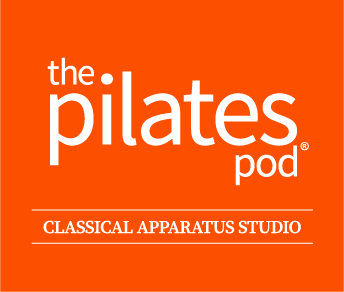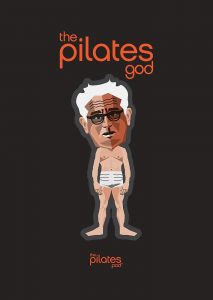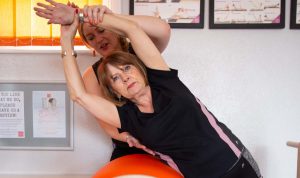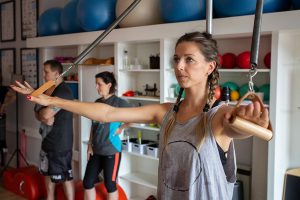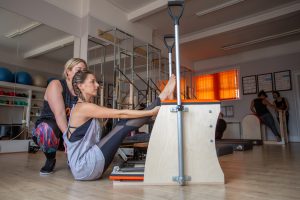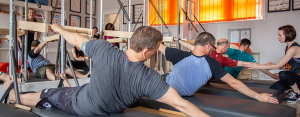Putting the “workout” back into Pilates
You’ve already heard of Pilates, right? You know – that thing that’s “a bit like yoga” or the one that “my wife does to breath and stretch out”.
You might need to think again! With so many types of Pilates out there, and hybrid workouts that fuse Pilates with boxing or Pilates and Yoga, or group fitness Reformer classes, how do you know if you are doing the true authentic work?
At The Pilates Pod, we’re proud to be fighting fashion and fads, forgoing shortcuts, dispelling myths and helping to educate others to the true nature of this much-adored exercise regime.
Dispelling the myths of Pilates
Pilates is a gentle stretch and breathing class done on a mat.
The Pilates Matwork repertoire was designed to be your homework to practice the concepts in between studio sessions. A traditional Pilates workout at the Pod is done on apparatus that uses springs for resistance instead of weight, such as Wunda chairs, Reformers, High Chair, Pedi Pole, Arm chair, Tower, Cadillac, Spine Corrector, Ladder Barrel, Magic Circles, Sandbag, Foot Gizmo, Toe Corrector and more. Just as it should be, with Matwork thrown in for good measure so you can practice at home.
The springs give support and bring about change to the body that using your own bodyweight on the mat alone just can’t do. The Matwork is therefore the hardest place for a beginner to start. It’s just you, your own body weight, gravity and probably a whole load of weak muscles and tight bits that need a bit more help to get some success from your mat moves! Cue the apparatus. Classical Pilates will begin with making those changes straight away with the help of the springs.
The workout will build joint and pelvic stability, improve strength over your centre (powerhouse) as well as the whole body, stretch out tightnesses and increase fitness and stamina.
But we absolutely love the Mat repertoire, and it’s genius because you can roll out a mat and practice anywhere, and we always want to keep teaching you how to do good Matwork- the ultimate goal of Pilates!
We have three types of Matwork classes to help you develop and to help you learn a good home workout you can do anywhere:~
Gentle Flow Matwork: great for those who need a slightly slow flow than the regular transitions between the mat exercises. We focus on stability and strength primarily, gentle stretch work and add in helpful but light resistance, standing exercises and balance work. Perfect for those a bit older, postnatal, with joint or back issues or neurological conditions.
Classical Mat: a more traditional matwork class, with an order, a nice flow and transitions to link one exercise to the next. A good workout that caters for all abilities and for you to work at your own level.
Matwork with Fascia Release: We’ll be focusing on the stretchier aspects of the Matwork, and add in the use of the fascia balls to help you release tight spots, and leave you feeling delicious!
Pilates is good for everyone.
With a strong focus on your powerhouse (glutes, back, deep abdominals, pelvic floor and inner thighs) Joe Pilates realised that this important muscular area was key for everyone to ensure the stability of the spine and pelvis and was the most common reason why injuries occurred due to a breakdown in posture. Nowadays, osteopaths are now seeing back pain as a result of people over working and bracing their bodies from fear of the pain, or from over training their abs and lifting heavy weights. So Pilates will teach you about your body.
BUT, not all exercises in the repertoire, or the way they are taught, are right for everyone. Certain medical issues such as back disc issues, osteoporosis, joint replacements or postnatal abdominal or pelvic floor weakness, call for carefully programmed workouts that are right for the individual and not generic mat based session.
Will Pilates fix me?
Pilates teachers are not medics, but movement and exercise professionals. A good teacher shouldn’t promise that Pilates will be able to fix any of your issues and instead allow the osteopath, doctor, physio, surgeon or chiropractor to identify and address the specific issues.
In fact with Classical Pilates, we won’t focus at all on the specific area to spot fix. Our bodies are connected and usually the problems we have are a result of poor body mechanics all over. Rather than having to leave out exercises that aren’t right for you in main group classes, with a whole studio of apparatus, we never need to leave out! Classical Pilates will instead address 99% of the healthy body you have in order to avoid further compensations arising and through this better execution of movement, you will fix yourself!
Remember, Pilates is meant to be a workout. So group classes are really for the healthy bodies or those with non diagnosed specific issues or injuries.
Pilates is complicated.
It really shouldn’t be! Taught Classically, it’s as simple as ABC. Bend your knees into your chest. Lift up your head neck and shoulders. Lift your arms up higher than your hips. Pump your arms up and down as you breathe in for 5 counts and breath out for 5 counts until you reach 100.
Well done! You’ve just done the first exercise in the Matwork repertoire “The Hundred”
Pilates is good for my core.
Yes it is. But that’s just the start! Classical Pilates teaches you the core is part of a bigger focus, your “powerhouse. “ Featuring your deep abdominals, glutes, back, inner thighs, pelvic floor and shoulders. The work is a whole body muscular experience that will strengthen and stretch from top to toe and not just about isolating and fatiguing a few muscles.
Pilates teacher training can be done over a weekend
Yes, unfortunately it can be! Without any governing body still (although things are changing!) you can qualify as a Pilates teacher under a pre Personal Trainer qualification and some inhouse training on a Reformer, or just a weekend long mat course. Classical Pilates full comprehensive certification takes around 12-18 months, covering the apparatus and matwork that Joe Pilates created, with over 600 hours post training practice, observation and assessments in a traditional apprentice/mentor style to really hone your craft and honour the history and lineage of this art. It’s a commitment to the authentic method and not a quick cash in on the Pilates name!
Pilates is just for women
Ahem, have you been reading this article? Originally created by a man, for men. The dilution of the authentic work has meant Pilates over the years has lost its original strong focus and become less workout and more stretch class. With a client base of weight lifters, golfers, GB athletes, football players from Luton Town FC, Stevenage, Watford, Tottenham and England FC as well as broadcaster and author, Guillem Balague…. We’ll let them show you their sweat!
For more information on Classical Pilates sessions or Pilates Teacher Training, check out Hitchin’s www.thepilatespod.co.uk
Tel 01462 338002
